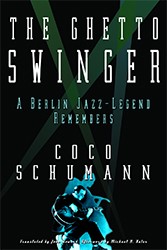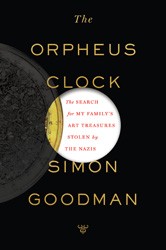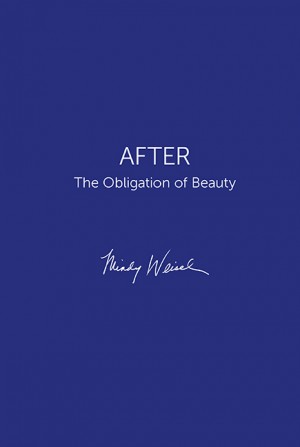While helping her parents sort out her grandfather George’s possessions after his funeral in 1992, Elizabeth Rynecki discovered a memoir he had been working on for more than fifteen years. In this record, George described his experiences living in Poland during World War II. Although he and his mother, Perla, managed to survive, his father, the artist Moshe Rynecki, was deported from the Warsaw ghetto by the Nazis and murdered at Majdanek. The author tells us that Moshe’s death “had a profound impact on my choice of study and my interest in both my family history and the broader history of the Holocaust.”
Moshe Rynecki, a highly regarded painter of Jewish folk scenes and Polish life, completed over eight hundred works of art before the German occupation of Poland in 1939. After the war, Perla was able to locate 120 of them; these she brought to the United States when she and her son immigrated. Elizabeth Rynecki grew up surrounded by her great-grandfather’s vibrant paintings of Jewish life in the 1920s and ’30s.
Chasing Portraits depicts Elizabeth Rynecki’s determined, almost obsessive, hunt for the remaining works. It is a fascinating, if a bit too personally detailed, saga of the discoveries and frustrations she encounters along the way. Naïve at the start, the author becomes aware of the legal and even political factors involved in the recovery of art and other possessions lost or confiscated during the Holocaust. Governments and private individuals are reluctant to participate in identifying or releasing works to family claimants. She cites several examples (besides the well-known Woman in Gold), and becomes wary of lending her family’s personally held paintings to a Polish Museum for exhibition, lest the museum refuses to return them. A chapter on the legal field of looted art and the enormous expense of filing claims is particularly sobering.
As Rynecki follows up on clue after clue, the story takes on a detective-novel quality. Sometimes the search provides serendipitous rewards. Invited to give a talk in Toronto, Rynecki is told about a collection of archived papers in the University of Toronto’s rare book library. This collection contains photographs as well as her great-grandfather’s personal papers — a treasure trove. By contrast, the author’s pursuit of leads in Israel are, for the most part, unrewarding. She also returns to Poland, visiting concentration camps as well as Warsaw’s Jewish Historical Institute together with a local videographer to create a documentary film about her great-grandfather.
Chasing Portraits provides insight into the haunting effect that a “lost legacy” can have on survivors’ descendants several generations after the Holocaust. Due to the author’s meticulous research and documentation, this work is an impressive addition to the genre of Holocaust memoirs.
Related Content:




